[javascript protected email address]
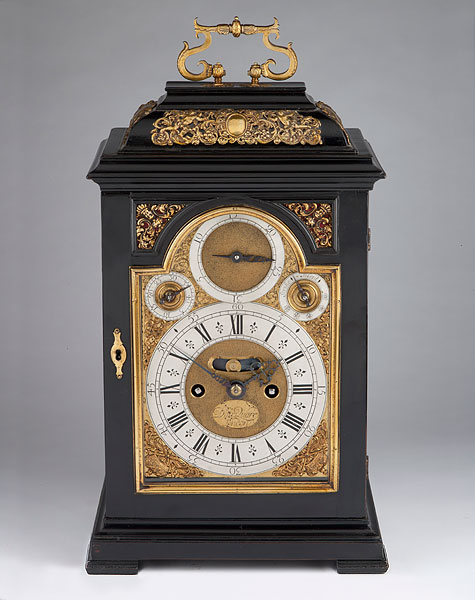
Daniel Quare, London No. 94

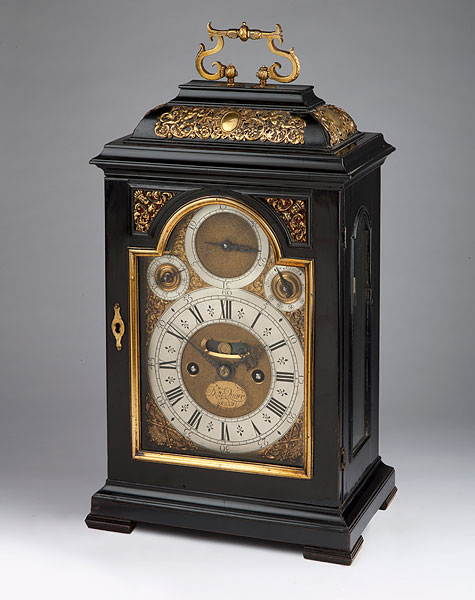
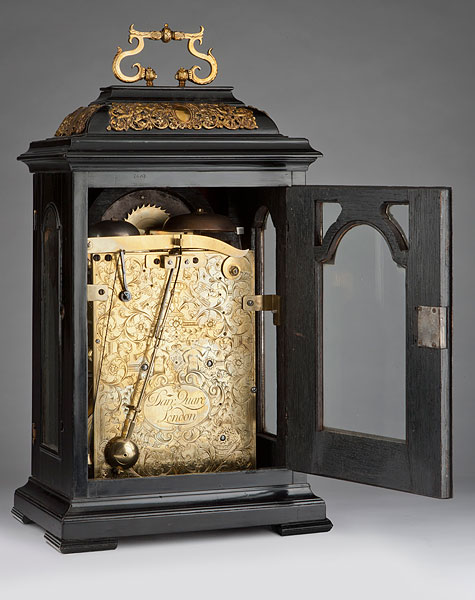
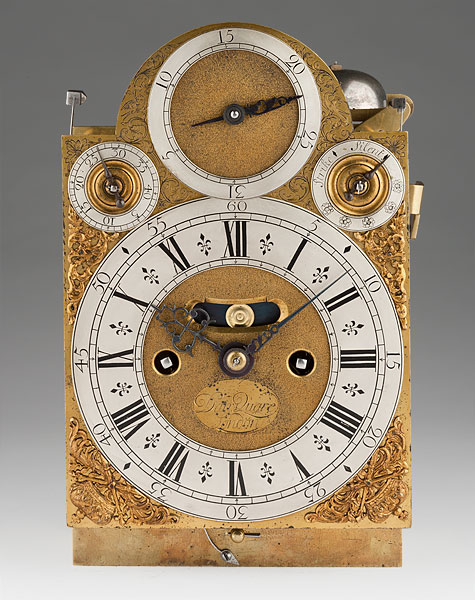
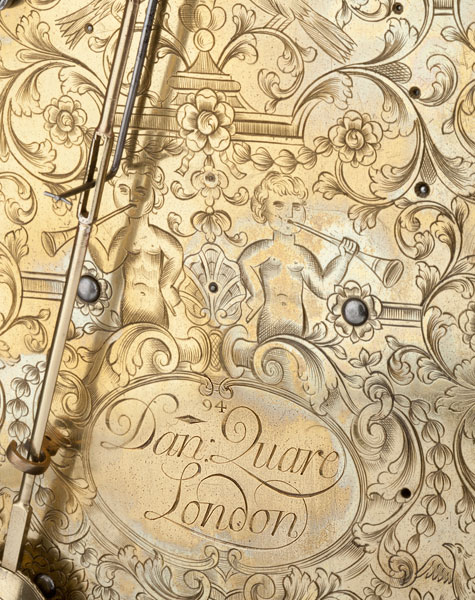
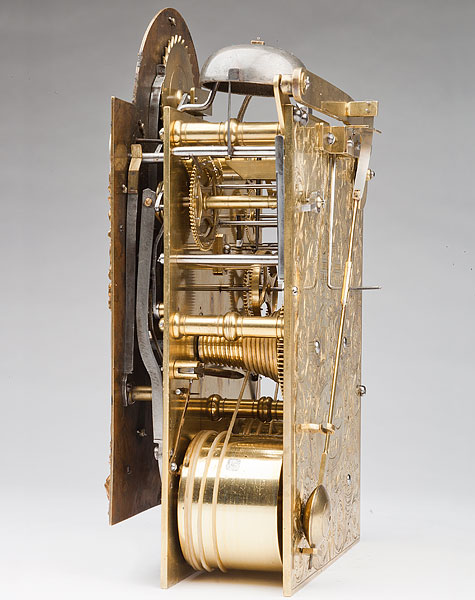
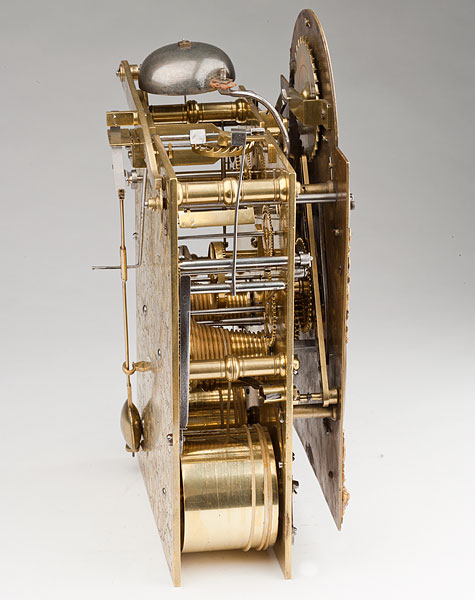
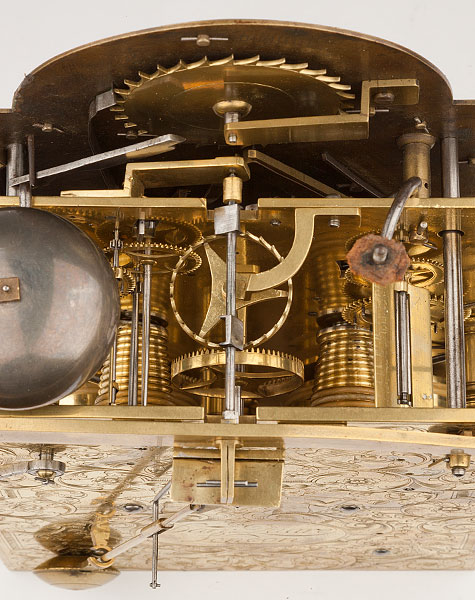
Circa 1705
Sold
17 inches high
A Very fine ebony striking table clock with pull quarter repeat. The Case The ebony veneered oak case has excellent proportions and it is surmounted by a robust double-S brass handle which is hinged in leafy bud pommels. The long inverted bell top is applied to the front and sides with gilt-brass repoussé mounts; the front example depicting a cartouche flanked by cherubs by holding garlands set within scrolling foliage. The front door is embellished by a bold brass moulding which frames the dial and it has two sound frets flanking the calendar each set with an Indian mask mount. The sides and rear door have glazed breakarch panels and the moulded base rests on restored ebony squab feet. The Dial The breakarch gilt-brass dial is signed Dan: Quare London in cursive script on a plannished oval in the matted centre with mock pendulum aperture above. The silvered chapter ring has Roman hours and Arabic minute numerals with fleur de lys half hour markers and small lozenge half quarter markers, pierced blued steel hands. The lower corners of the dial are embellished with crown-and-sceptre spandrels whilst the corners above are set with subsidiary rings for strike/silent and pendulum regulation flanking a large silvered calendar ring with a matted centre. The Movement The very substantial movement has six large ring-turned baluster pillars and twin gut fusees and spring barrels for the 2 trains; the going train retains the original verge escapement with the pendulum spring-suspended from a brass regulation bar which has snail-cam regulation adjusted via the left subsidiary dial. The strike train peels on a single large bell whilst the quarters chime on ? bells via ? hammers. The exceptionally well engraved backplate is signed Dan: Quare London 94 in an oval reserve within a foliate cartouche, the remainder of the backplate is engraved with fruit-laden cornucopia beneath the signature flanked by doves, whilst above the cartouche are two trumpeting heralds seated beneath a pedestal supporting a gadrooned urn flanked a pair of eagles. Literature This clock has the additional benefit of being illustrated in the excellent book English Domestic Clocks by Cescinsky & Webster, 1st ed. 1913, page 282
